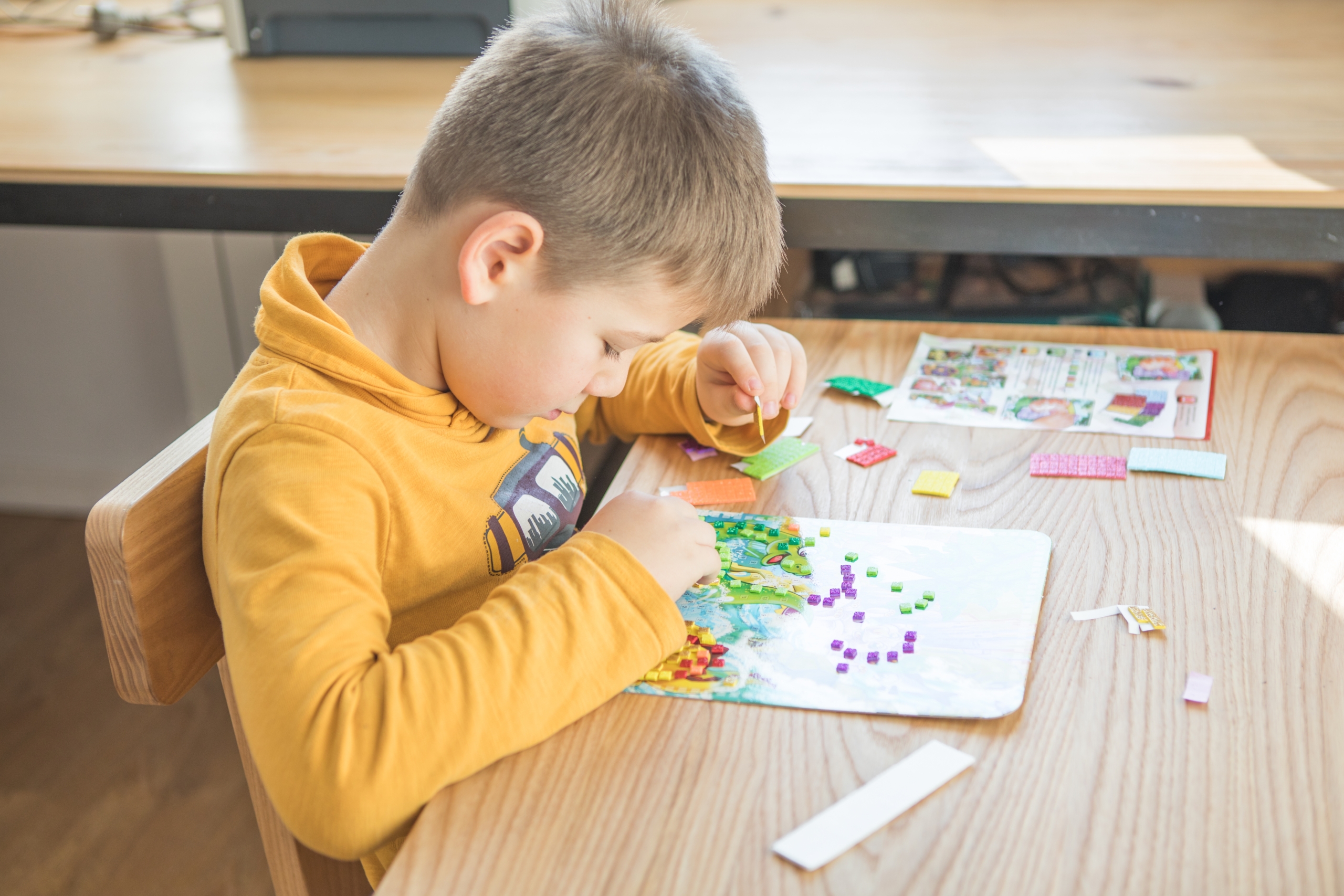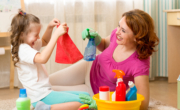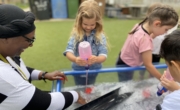Want to set up the perfect play space? We’ve got you covered.
There’s a lot of pressure on parents and carers in the modern world to demonstrate how involved they are in their children’s lives. This can come up on social media and in our interactions at the school gates, but often it starts in our own houses, as we try to ensure their environment is perfect for growing bodies and minds. Here, in an entertaining myth-busting article, we tell you how our professionals would approach creating the ideal home environment and share some examples from real parents.
Imagine you walk into a restaurant and they take your coat without asking. You might think “that’s nice” – especially if they then told you that the restaurant is perfectly heated to the correct temperature.
Then they tell you that there’s live music on. It’s a string quartet which might be a little loud… But they’re on a break from the philharmonic, and really are the best. You’d probably still think that was nice, depending on your mood, where you’re sat and if you had something important to talk about with your dining partner. Then the waiter tells you that you’ll be eating the chef’s special – mussels – because it’s delicious and really the best decision you could make. And then they put the menu away and walk off. At this point you’d probably be quite annoyed, regardless of whether the waiter was right or not. If you’re wondering whether you’re reading the right article at this point, then don’t worry… we’re going somewhere with this.
A lot of us behave like this fictional waiter with our children – setting out activities for them (often while they’re still asleep!!!) and then becoming frustrated when they don’t engage as much as we’d like. It comes from a good place, but the truth is it doesn’t matter how much thought we’ve put into their development or how valuable the experience is if the child doesn’t feel like it, any more than it matters how good the mussels are if we’re not in the mood. So, what should we take away from this thought in an article detailing how to set up an environment for play?
Our Child and Family Support Worker Sarah puts it quite succinctly. She said: “Don’t spend ages setting things up. They might only spend two minutes playing with it and then you feel rubbish”.
We hope you enjoyed reading the article! Joking aside, however, there is something to be learned from the example above. It is nice to have courtesy, live music and chef’s specials available to us in a restaurant, just as it’s good to have options in play. But a better approach is to focus on covering the basics that enable children to do a variety of different tasks according to what inspires them – such as art materials, building blocks, modelling dough or sand. Great, so you should head out now to the art supplies shop and buy every coloured pencil under the sun, right? Once again, the answer our professionals would give is not the one you might expect.
“It’s all about getting down to their level and taking all YOUR distractions away. No mobile phone, no work. Even if it’s only 20 minutes”.
Child and Family Coordinator Rachel says: “Think two pencils… not 25 pencils. Don’t give them too much to choose from as you can be over-resourced, and that can be overwhelming – it’s just about getting the basics down so they can create”. Great! So just lots of stuff sat all around, and then they can move between all the diverting activities you’ve provided. That sounds do-able?
Yes, apart from the fact they won’t do that. What they will do is take a bit from each of the activities and drag them around the room, and annoy you by getting everything all mixed up, and take things out to the garden… and the worst thing is that this is the BEST thing they could be doing! As our Child and Family Play and Learning Worker Rebecca says: “Day to day children follow our lead but during play it’s the one time they can do what they want. It’s important to allow them to experiment with influencing their own world and learn about cause and effect”. The importance of learning cause and effect is why many of our children’s services avoid plastic glasses, plates and cutlery, as what we want to teach is consequence, respect for possessions and respect for others’ items.
“Day to day children follow our lead but during play it’s the one time they can do what they want”.
But what about their own items? Should they respect them? Meet mum Victoria, your new icon of chilled-out cool.
She said: “At the moment my daughter likes those really cute-looking dolls with the big eyes… by which I mean I set up them up in a line and she smashes into them! But it doesn’t bother me in the slightest as I work in an education setting and I know it’s important to be led by your child and their creativity”.
As Victoria hints at, sometimes this focus on personal responsibility and freedom leads to you having to sweep up broken crockery and wash sand out of the wheels of a toy train. However, sometimes, just sometimes, giving children the choice and opportunity to do what matters to them can lead to the creation of exactly the sort of happy memories our summer campaign is all about – stories like the one told by dad Scott. He said: “I think it’s a little bit about letting go and it’s about listening as well. What my children love to do most is build tunnels from construction blocks – my eldest will build a tunnel for the other one to go through and watching them play together is really rewarding. The sweetest thing is that they talk about it all the time, and my youngest child’s favourite word is tunnel”. But the most important aspect of the child’s environment aren’t toys, art supplies, furniture or even something you can buy or make… It’s you.
Mum Leanne says it best: “It’s all about getting down to their level and taking all YOUR distractions away. No mobile phone, no work. Even if it’s only 20 minutes… It’s about true time, not a long time”.

Now you’ve got your environment sorted, you can take your play to the next level with practical guidance from our child development experts on creating engaging play and fun, simple, low-cost activities that the whole family can enjoy. Check out our Creating Happy Memories hubpage to find out more.

As relaxed as this article aims to be about our home environment, the truth is that we can all find our home responsibilities overwhelming from time to time. If you’re struggling with any aspect of family life, or just need to speak to someone, you can contact our FamilyLine service for free emotional support and guidance.








